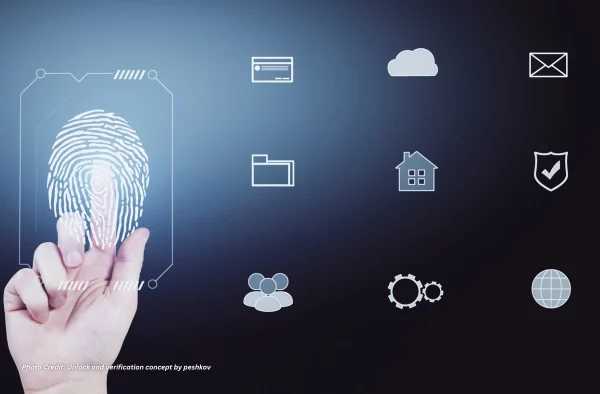Australia advances zero trust cybersecurity
Share

The Australian government is implementing a comprehensive zero-trust model across all sectors to enhance cybersecurity. This effort is strengthening the nation’s digital security as part of a broader strategy. The zero trust model requires authenticating and authorising every user, device, and network interaction, following the ‘never trust, always verify’ principle.
This approach significantly reduces the risk of breaches, which is critical given the increasing cyber threats that target government agencies. Australian government agencies will transform how they protect their critical information assets by adopting zero-trust architectures.
Grasping zero trust essentials
Zero Trust Architecture (ZTA) marks a significant shift in cybersecurity, asserting that no entity, whether inside or outside an organisation, should be automatically trusted. As defined by the National Institute of Standards and Technology (NIST), this model demands strict verification of every access request based on strict criteria before approval. The Microsoft Security team highlights that ZTA adheres to the principle of “never trust, always verify” to address risks from both external threats and insider attacks.
ZTA enhances system security by incorporating several key components. ZTA mandates continuous identity verification, employing multi-factor authentication (MFA) and robust identity and access management (IAM) solutions to ensure real-time authentication and authorisation of users and devices, thereby reducing the risk of unauthorised access. Micro-segmentation is another crucial element that divides the network into smaller segments to restrict access and limit the impact of potential breaches.
The Australian Cyber Security Centre states that micro-segmentation isolates sensitive data and applications, minimising lateral movement within the network during a breach. Additionally, ZTA quickly detects and responds to anomalies through comprehensive logging and monitoring. It uses advanced analytics and threat intelligence tools to gain visibility into network activities and identify potential threats.
Embracing zero trust architecture
Australian government agencies need to adopt Zero Trust Architecture (ZTA) due to the surge in cyber threats. Traditional perimeter-based defences are inadequate for tackling contemporary security issues, making ZTA essential. The Australian Cyber Security Centre emphasises that a more resilient and adaptable security model is necessary due to the growing complexity of cyber threats and advanced attack vectors.
Implementing ZTA requires advanced identity and access management. Robust multi-factor authentication (MFA) and thorough identity verification systems are required for an effective ZTA. CyberArk asserts that ensuring continuous authentication of users and devices significantly lowers the risk of unauthorised access before they engage with critical systems.
Furthermore, the Australian government’s cybersecurity strategy stresses the importance of integrated security monitoring and analytics. ZTA supports this by providing real-time threat detection and response capabilities. By utilising advanced analytics and threat intelligence, agencies can more effectively detect and address potential breaches. This proactive approach aligns with Australia’s broader cybersecurity objectives to strengthen critical infrastructure and protect national interests.
Exploring key ZTA elements
Several key components bolster security in contemporary IT environments in Zero Trust Architecture (ZTA). Identity verification, least privilege access, and micro-segmentation are the essential components. Each component ensures a comprehensive approach to modern threats:
- Identity Verification: To ensure that only authorised entities can access systems, it involves ongoing authentication of users and devices. Microsoft states that Zero Trust Architecture (ZTA) requires robust multi-factor authentication (MFA) and adaptive authentication methods. Continuous validation helps mitigate risks from compromised credentials and unauthorised access.
- Least Privilege Access: This principle ensures that the system grants users only the minimal level of access required for their specific roles. Restricting user permissions limits the potential damage from security breaches. In order to achieve least privilege, organisations must implement detailed access controls and regularly review user permissions to match evolving roles and responsibilities, according to CyberArk.
- Micro-Segmentation: Dividing the network into smaller, isolated segments improves network security. It confines potential threats to a specific area, preventing them from spreading across the entire network. According to Huntsman Security, micro-segmentation entails creating secure zones within the network and applying strict access controls between them. This method reduces the attack surface and strengthens overall network security.
These components collectively strengthen ZTA’s fundamental principle of “never trust, always verify.” By incorporating continuous identity verification, least privilege access, and micro-segmentation, organisations can more effectively defend against advanced cyber threats and improve their overall security posture.
Overcoming ZTA deployment hurdles
Implementing Zero Trust Architecture (ZTA) presents several challenges, particularly in continuous monitoring, system integration, and user adaptation. Addressing these challenges requires targeted solutions based on industry best practices and recent cybersecurity insights:
- Continuous monitoring is essential yet demanding within a zero-trust model. Verifying users and devices on a continuous basis can stretch resources and require advanced tools. The A23-HPE Whitepaper asserts, “Detecting and responding to threats in real-time is vital, and continuous monitoring is necessary.” Organisations need to deploy advanced analytics and automated systems to handle this effectively. CyberArk states that integrating security information and event management (SIEM) systems can enhance visibility and streamline threat detection.
- System integration presents another significant challenge. Seamless integration across various systems and technologies is required for zero trust, which can be complex. The Forrester Guide states, “Implementing Zero Trust requires a comprehensive review and overhaul of existing IT infrastructure.” This often includes upgrading legacy systems and ensuring compatibility with modern security solutions. In a phased approach, the Microsoft Zero Trust mode recommends starting with critical assets and gradually extending Zero Trust principles to minimise disruption.
- User adaptation also poses a critical challenge. Changes like frequent re-authentication and stricter access controls may face resistance from employees accustomed to traditional security models. Adapt suggests, “User acceptance requires effective change management strategies, including training and clear communication.” Comprehensive training and highlighting the benefits of zero trust can ease transitions and boost compliance.
Using industry-specific strategies and tools addresses these challenges. The Cyber Security Strategy 2023–2030 states that ongoing refinement and adaptation to emerging threats and organisational needs are necessary to implement Zero Trust effectively. By employing these strategies, organisations can fully benefit from Zero Trust Architecture, ensuring a strong and resilient security posture.
Effective strategies for ZTA success
Deploying Zero Trust Architecture (ZTA) successfully requires following several best practices:
- Start small: Initiate ZTA initiatives in specific departments before rolling them out organisation-wide. Organisations can use this strategy to test and refine ZTA approaches in a controlled setting, minimising the risk of widespread disruption. Forrester recommends, “Organisations should pilot programmes in targeted areas to test and adapt Zero Trust principles on a manageable scale.” This method mitigates risks and gathers insights that can inform broader implementation.
- Invest in training: Educate staff on ZTA principles and practices. Comprehensive training ensures employees understand their roles in maintaining security and can respond effectively to potential threats. Adapt highlights: “Comprehensive training programmes are critical for employee understanding and adherence to Zero Trust policies.” Effective training should cover new authentication processes, data protection measures, and response protocols, reducing resistance and boosting operational efficiency.
- Leverage existing tools: Integrate ZTA into current security tools to improve their effectiveness. Using this approach, organisations can improve security without significant additional investment. Zscaler states, “Integrating Zero Trust with existing tools such as firewalls and SIEM systems maximises their effectiveness and provides a cohesive security strategy.” Utilising familiar technologies not only reduces costs but also ensures a smoother transition.
These best practices emphasise a methodical and supported approach to implementing zero trust. By starting small, investing in training, and leveraging existing tools, organisations can navigate the complexities of ZTA deployment and establish a robust security framework.
The adoption of Zero Trust Architectures (ZTA) by Australian government agencies marks a significant advancement in strengthening the nation’s cybersecurity. As cyber threats continually evolve, shifting to a zero-trust model is essential for safeguarding Australia’s digital infrastructure. Key practices such as starting small, investing in training, and leveraging existing tools are crucial for the effective implementation of ZTA.
These strategies not only bolster security but also facilitate a smooth transition and optimise resource use. Australian government agencies will need to prioritise the ongoing evolution and implementation of ZTA for their cybersecurity strategy. This process is likely to shape global cybersecurity strategies by providing insights.

Justin Lavadia is a content producer and editor at Public Spectrum with a diverse writing background spanning various niches and formats. With a wealth of experience, he brings clarity and concise communication to digital content. His expertise lies in crafting engaging content and delivering impactful narratives that resonate with readers.










Today’s Pick
11th Annual Aus Goverment Data Summit
April 1, 2025
7th Annual NZ Government Data Summit
May 7, 2025
3rd Public Sector Comms Week
May 14, 2025
Subscribe
We send emails,
but we do not spam
Join our mailing list to be on the front lines of healthcare , get exclusive content, and promos.
AI appointment Australia Australian boost boosts business businesses covid-19 cyber cyber attack cybersecurity cyber security data data breach data management defence Digital employment enhance enhances fraud funding governance government grants infrastructure Innovation Lockdown management new zealand NSW NZ online privacy public Public Sector queensland renewable energy scams security Social Media Technology telecommunications victoria
-

Understanding and building your digital strategy
Digital Government, Opinion
-

Featured Leader: Jamie Morse on multi-channel strategies for communication
Communications, Featured Leader
-

Featured Leader: Tegan Tembe of NSW Treasury on creating solid planning strategies and processes
Featured Leader
-

Wirraka Maya Health Service improves patient care with My Health Record
Learning
Show More-

Effects of ineffective communication in the workplace
Communications, Personal Development
-

7 ways you can enhance your personal development skills
News, Personal Development
-

5 advantages of working in the public sector
News, Personal Development, Professional Development
-

7 causes of communication issues in the workplace
Communications, News, Personal Development
Show MoreLast Viewed